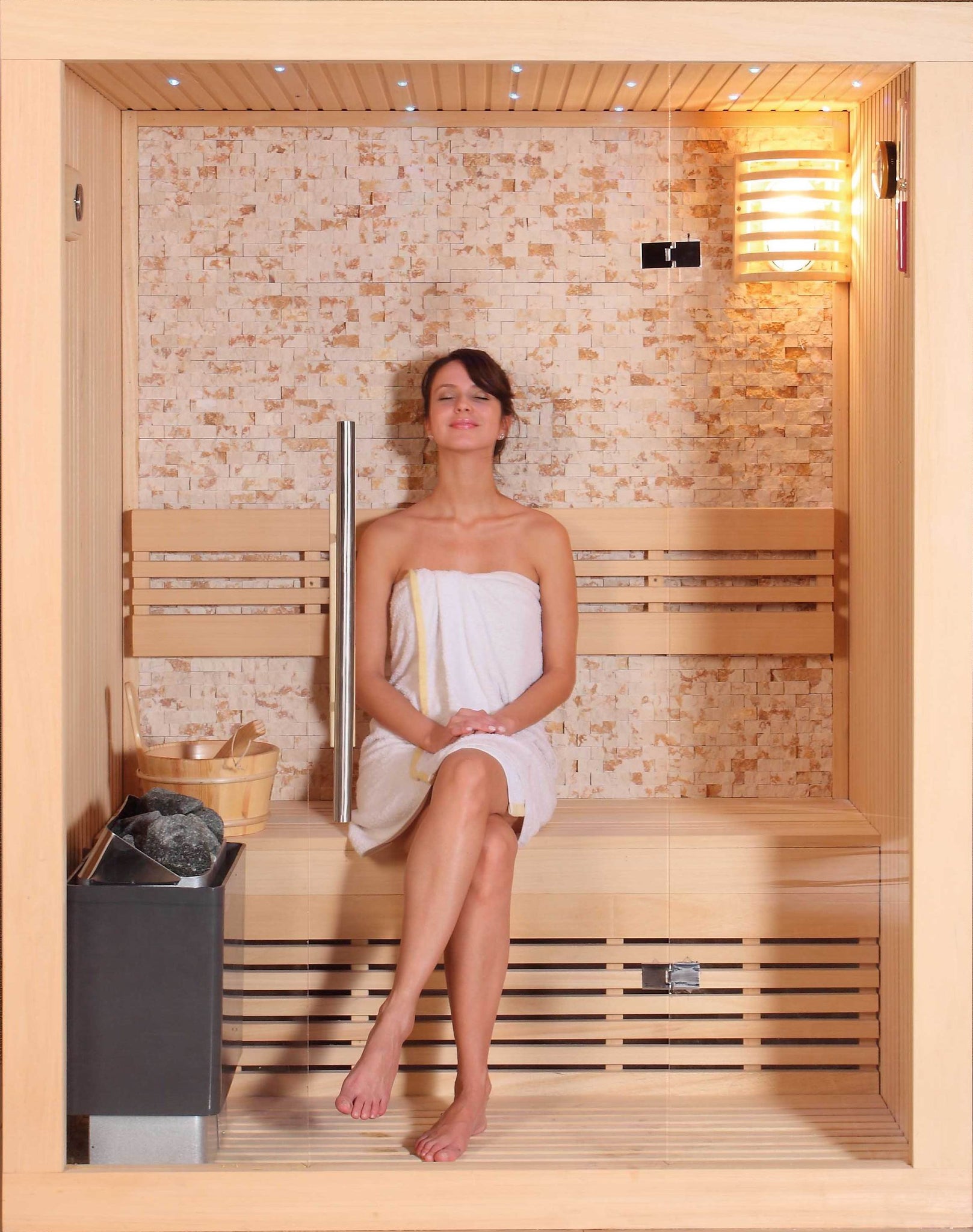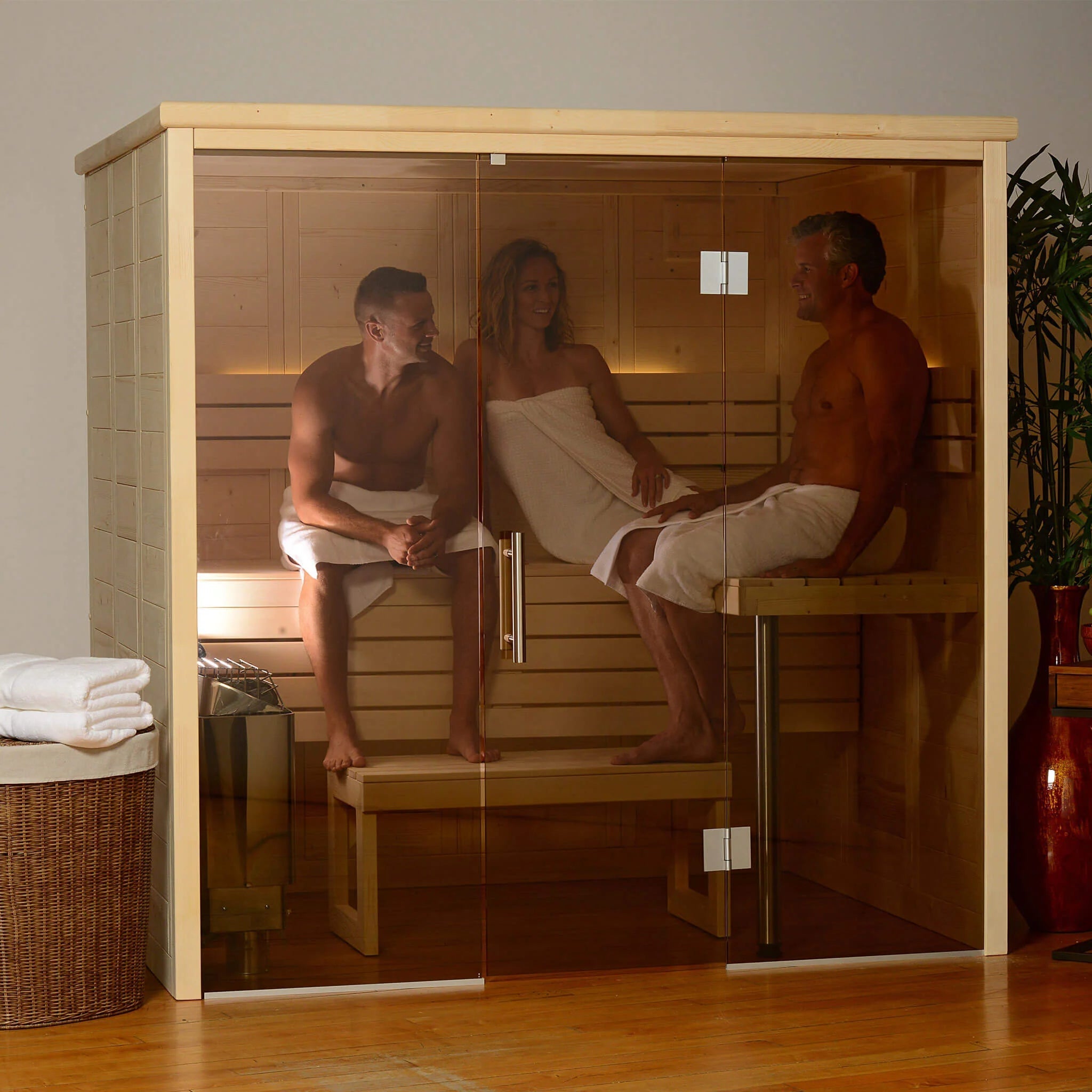The Buzz on Traditional Sauna
Wiki Article
More About Traditional Sauna
Table of ContentsThe Best Strategy To Use For Traditional SaunaAn Unbiased View of Traditional SaunaAll About Traditional SaunaRumored Buzz on Traditional SaunaSome Known Questions About Traditional Sauna.
Many of the weight shed in a sauna is water loss and is re-gained upon rehydrating. Without a question sauna can be a vital component of a healthy weight loss program. To check out the distinctions between typical and IR saunas, I will certainly divide these into proven, theoretical, and produced distinctions.Therefore, the most popular factor in the saunawhich is at the ceiling straight above the sauna heateris commonly between 185 and 190 F. Claims that a standard sauna surpasses 200 F is just not real and not relevant for electric saunas offered in the US. The temperature for a far-infrared sauna is typically established in between 120 and 140 F; nevertheless, unlike the traditional sauna, the goal in and IR area is not to accomplish a high temperature level.
Due to this, the temperature level distinction is virtually unnecessary, because extreme sweating leads to both sauna kinds, but the approach of heating the body is different. In an IR sauna the bather will certainly really feel warm and will certainly sweat profusely, yet at a lot lower temperatures (Traditional Sauna). Hence, if the goal is to invest longer time periods in the sauna, the IR sauna is a great selection
When a typical sauna has actually been correctly heated up, the sauna walls are cozy, the air temperature has actually accomplished established temperature and the rocks are incredibly heated. As an interesting side note, the heated wall surfaces and the rocks are sending out far-infrared warm, incorporated with the warmed air, to produce an "enveloping warm".
8 Easy Facts About Traditional Sauna Described

When the heat is accomplished, the aspects cycle on and off to maintain the high temperature level. A lot of traditional sauna customers enjoy putting water over the rocks to create heavy steam to raise sauna humidity levels. The advantages of putting water over the rocks consist of: making the room a lot more comfy, moistening the nasal flows, and permitting the use of aromatherapy by mixing essential oils with the water.

When the energy goes into the body, it triggers the body temperature to boost and inevitably results in perspiration. In an infrared sauna it is necessary for the emitters/heaters to stay on practically frequently. Because there is no mass of rocks to keep heat, the sauna will cool if the emitters turned off.
As mentioned above, the sauna bather in an infrared space intends to position himself in front of running emitters to get optimal take advantage of the heat. The home heating time for both rooms can be really various, relying on exactly how the spaces are utilized. For a typical sauna, a bather needs to permit 30-40 mins for the room to accomplish a desired temperature level and to appropriately pre-heat the rocks.
Not known Details About Traditional Sauna
A well built sauna will commonly achieve a temperature of 150-160 F in about 30-40 minutes. For hotter temperatures, the area may need to heat for a longer period.

Traditional saunas often tend to be bigger (thus utilize more electricity) than infrared saunas, although traditional saunas are certainly readily available in one and 2 individual sizes also. For a two-person standard sauna, 5x6 or 5x7 size is most popular. The top bench can pleasantly seat 2 or 3 people and is likewise enough time to exist down during the sauna session.
Traditional Sauna - The Facts
The typical expense per kWH of electrical power in the united state is approximately $0.11, so a 4.5 kW heating system will set you back around $.50 to compete one hour, if the heating unit runs constantly for one hour. Commonly a sauna heating unit will compete 75% of the initial hour and 50% of succeeding hours on considering that the elements cycle once the set Source temperature is attained.
There is a rarely discussed distinction in the social experience between the two rooms. While our society has shed a few of the social benefit of the article source typical sauna experience, it can be very socially fulfilling (Traditional Sauna). From household time in the sauna, to heart-felt conversations with considerable others, to sauna partiesthe typical sauna experience can cause intimate mingling
The Main Principles Of Traditional Sauna
Many higher end infrared spaces consist of colored light treatment, sound systems and full-glass fronts.Report this wiki page